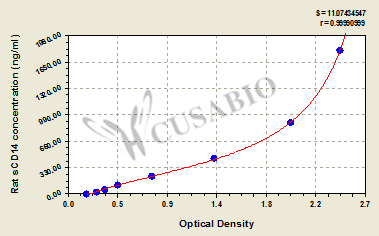The product CSB-E11178r is a sandwich ELISA kit developed to measure concentrations of rat sCD14 in serum, plasma, or tissue homogenates. This assay uses the sandwich enzyme immunoassay technique in combination with the enzyme-substrate chromogenic reaction to quantify the analyte in the sample. The color develops positively to the amount of sCD14 in samples. The color intensity is measured at 450 nm via a microplate reader.
CD14 is a GPI-anchored receptor expressed by macrophages (MΦ) and neutrophils, facilitating pro- and anti-inflammatory cytokine production in response to various DAMPs. It functions in the TLR4-MD2 complex to initiate and activate proinflammatory signaling events in response to gram-negative bacteria through recognition of lipopolysaccharide (LPS). It plays a critical role in the phagocytic clearance of apoptotic cells and in the reactivation and immune recognition of microbial cell wall components of Gram-positive and Gram-negative bacteria. CD14 has also been reported to be upregulated during renal ischemia-reperfusion injury and in tubular epithelial cells of the kidney after unilateral ureteral obstruction.






